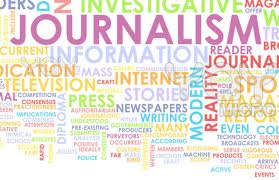Discuss prerequisites of journalistic writing and differentiate journalistic writing from literature.
Basic Principles:
Journalism seeks to answer these questions in every story
- Who
- What
- When
- Where
- Why
- How
The newsworthiness of a story may be judged by:
- Proximity
- Timeliness
- Impact
- Conflict
- Prominence
- Currency
- Human Interest
- The Unusual
Pre-Requisites of Journalistic Writing and Differences between Journalistic and other Forms of Writing:
According to American Society of Newspaper Editors, Journalism is to communicate to the human race what its members do, feel and think since this purpose of journalism is different from the other forms of communications.
Journalistic writing is different from other forms of writing in several respects
– the kind of knowledge it communicates;
– the audience for whom the communication is intended
– the manner in which communication takes place
- Like other writings, journalistic writing is made up of words, phrases, clauses, sentences and paragraphs.
- The discourse type may be narrative, descriptive, instructive, expository or argumentative.
- It follows the same rules of spelling, punctuation and grammar, yet there are certain differences because newspapers are written in a hurry and read quickly; that is why journalist work cannot e compared with writing formats.
- The journalistic writing must be brief, brisk and bright.
Points for Effective Journalistic Writing:
Keep it Short & Simple.
Use short, simple words: no Latin roots, no complex constructions, no jargon, no long words when a short one will do and no showing off. The point is to communicate simply, clearly and effectively. “Expenditure” is hard, “spending” is easy. Simple sentences… when it gets too complex, with too many clauses, break it up. One point per sentence. One idea per paragraph. About 25 words to a paragraph.
Keep it Clear & Concise.
Be direct, local and personal. Use active not passive verbs and short, “bouncy” sentences that actively engage the reader. Point out how the story affects the reader. You are not writing for a university lecturer – you are writing for your mum or sister or best friend. Direct communication reassures the reader that you have them in mind.
Make the First Paragraph Count.
This is the only paragraph likely to be read so it should carry the key message, preferably in a strong image that will stay with the reader. It should rivet the reader’s attention so they want to know more. Then build an “inverted pyramid” with further important information first and dispensable detail later in the story.
Pay Attention to Detail.
Spelling and grammar are important. Get a dictionary and a thesaurus. Use the spell-check on your computer. Go over your story at least three times to make sure that it makes sense, that it flows, that you can substantiate all facts, that you have told both sides of the story and that you have explained all the relevant points.
